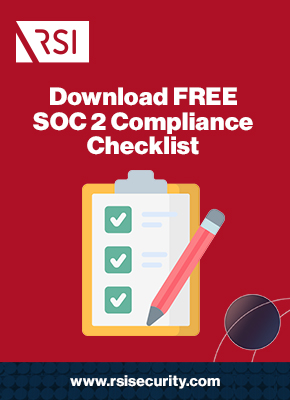The American Institute of Certified Public Accountants (AICPA) oversees several certification programs for service organizations, including those for software-as-a-service (SaaS) providers. If clients are uncertain about the SaaS company’s security measures protecting their data, producing a System and Organization Controls (SOC) 2 Type 2 report provides concrete trust assurance. Benefits of SOC 2 Type 2 certification include customer confidence, incident impact minimization, and streamlined compliance.
Benefits of SOC 2 Type 2 Certification
Type 2 Certification is not the only kind of SOC 2 report companies can earn, but it is the most robust. SOC 2 Type 2 certification benefits your organization in the following ways:
- Robust security assurance for your clients
- Long-term cost savings and loss prevention
- Protection from potential reputational damage
- Streamlined regulatory compliance efforts
For your organization to make the most of AICPA’s certification processes, it’s beneficial to understand the different SOC levels, the Trust Services Criteria used for SOC 2 and SOC 3, and the two types of reporting at each level.
Benefit #1: Robust Security Assurance
The SOC 2 Type 2 audit is an in-depth process; it offers unparalleled insights into your security controls compared to all other SOC Type reports at all levels (SOC 1, SOC 2, SOC 3). Type 2’s more substantial weight stems from the extensive evaluations conducted by the auditing body, which tests the design and upkeep of your security controls over an extended period.
The amount of time needed to complete a full SOC 2 Type 2 audit will vary depending on your company’s size and complexity, along with the nature of your clientele and risk environment. A SOC 2 Type 1 Report usually takes about two months to generate, whereas a SOC 2 Type 2 report often spans 12 months. The year-long testing period ensures optimal evidence of your security.
Benefit #2: Long-Term Cost Savings
Some estimates put the price of the SOC 2 Type 2 audit itself at $20,000 to $80,000, depending on a company’s size and complexity. And these aren’t the only costs; staffing and additional software needed to complete the audit can add significantly to this sum. For example, another expert estimate puts a SOC 2 Type 1 Audit’s cost below $17,000 but claims additional cost factors like lost productivity bring the total price over $140,000.
However, these figures pale in comparison to the average costs of a data breach, per IBM:
- In 2021, data breaches cost $4.24 million on average, up 9.8 percent from 2020.
- These figures multiply by 100 for “mega” breaches impacting over 50 million records.
- Lost business due to reputational damage accounts for the highest share of total costs, at about 38 percent.
To the extent that SOC 2 Type 2 audits minimize the chances of these breaches happening, they help prevent the direct costs of data theft, along with the long-term opportunity cost of lost business.
Request a Free Consultation
Benefit #3: Brand Reputation Protection
Digging deeper into the figure from above, lost business being about 38 percent of the average data breach cost can be misleading—it might underestimate the impact of reputational damage.
All service organizations depend on clients’ trust. If your company has suffered a breach in the past or is at risk of one occurring in the future, your clients may abandon you, leading to total business loss and potential collapse. Thus, SOC 2 Type 2 auditing provides immense value for companies that have suffered attacks in the past through reputational recoup. SOC 2 Type 2 can save your brand.
SOC 2 Type 2 certification can also provide a competitive advantage for companies that haven’t suffered attacks in the past over their uncertified peers.

Benefit #4: Streamlined Compliance Mapping
SOC 2 Type 2 certification offers value in facilitating regulatory compliance across various other frameworks or standards that may be required for your business. For example:
- If your company deals with clients in the healthcare industry, you are likely a covered entity or a business associate that needs to comply with HIPAA / HITECH.
- If your company accepts credit card payments, you likely need to comply with the Payment Card Industry (PCI) Data Security Standards (DSS) or other PCI regulations.
- Depending on your business’s location and the location of the clients whose data you process, data privacy standards like California’s CCPA or Europe’s GDPR may apply.
Fortunately, AICPA has developed common criteria mapping guides that track overlap and correspondence between the TSC requirements and other compliance frameworks.
SOC 1, SOC 2, and SOC 3 Report Comparison
Beyond the benefits above, another factor companies should consider when deciding whether to undergo a SOC 2 Type 2 audit is what SOC level would be best for them. This factor has to do with what kind of service your company provides, along with who the intended audience is for the SOC report itself. Namely, SOC 1 audits are done on different organizations than SOC 2 and SOC 3. SOC 2 and SOC 3 reports are on the same companies but for different audiences.
SOC 1: Report on Internal Control over Financial Reporting
The full title of SOC 1 is “Report on Controls at a Service Organization Relevant to User Entities’ Internal Control over Financial Reporting” or “SOC for Service Organizations: ICFR.” Internal control over financial reporting (ICFR) refers to service organizations’ clients and their internal staff or contractors (the “user entities”) who need to secure financial records or documentation.
SOC 1 audits typically involve financial service providers, such as payroll management. However, they can also apply to this particular segment within a company that provides other services. For example, if a SaaS company provides cloud hosting and financial services, it may seek out a SOC 1 audit. But if it doesn’t prioritize these services, it’s more likely to seek a SOC 2 or SOC 3 audit.
SOC 2: Report on Trust Services Criteria (TSC)
The full title of SOC 2 is “Report on Controls at a Service Organization Relevant to Security, Availability, Processing Integrity, Confidentiality or Privacy,” or “SOC for Service Organizations: Trust Services Criteria.” Companies may elect to use other control frameworks for SOC 2 auditing, but the AICPA’s Trust Services Criteria (TSC) is preferred by most SOC 2 auditors.
Unlike SOC 1, SOC 2 audits report on a service organization’s general security via system and organizational controls besides financial reporting. As a result, SOC 2 audits apply to a broader range of service organizations, including but not limited to SaaS and cybersecurity providers.
A SOC 2 report is generally written for a specific, limited audience. A service organization may provide a SOC 2 Type 1 or Type 2 report to its clients, for example, or other auditing authorities.
SOC 3: Report on TSC for General Use
The full title of SOC 3 is “SOC for Service Organizations: Trust Services Criteria for General Use Report” or “Trust Services Report for Service Organizations.” As these simplified titles suggest, SOC 3 is a pared-down version of SOC 2.
SOC 3 uses the same framework(s) as any SOC 2 report—whether Type 1 or Type 2—and confirms the same information, but SOC 3 does not provide specific details about each element of a company’s security controls, nor the TSC criteria used.
A SOC 3 report is generally written for a general public audience. Common use cases include publishing it to a company website on the “About Us” page or over services to which it applies.

The AICPA Trust Services Criteria (TSC)
If your company is a service organization, it’s more likely a candidate for SOC 2 or SOC 3 than SOC 1. In both cases, the audit conducted will revolve around the Trust Services Criteria, a framework developed by the AICPA. The TSC comprises criteria that measure the efficacy of security controls across five primary categories, based on principles established in the Committee of Sponsoring Organizations of the Treadway Commission (COSO) framework.
The AICPA Trust Services Categories
The core of the TSC framework comprises the five Trust Services Categories, which include:
- Security – Protection against unauthorized access to data or systems that process it
- Availability – Accessibility and usability of data, along with the accessibility of products and services
- Processing integrity – Complete, valid, accurate, timely, authorized processes
- Confidentiality – Prevention of misuse for data designated as sensitive or protected
- Privacy – Prevention of misuse for personal or personally identifiable information (PII)
There is a significant overlap between the categories and the criteria pertaining to them, which is intentional: the TSC framework is designed to capture the interconnectedness of all controls.
TSC Common and Supplemental Criteria
The TSC framework also comprises individual criteria pertinent to the five categories, including:
Common criteria (CC Series) – Including measures for the following subcategories:
- Control Environment (CC1)
- Communication and Information (CC2)
- Risk Assessment (CC3)
- Monitoring Activities (CC4)
- Control Activities (CC5)
- Logical and Physical Access Controls (CC6)
- System Operations (CC7)
- Change Management (CC8)
- and Risk Mitigation (CC9)
Availability criteria (A series) – Including measures for maintaining current processing capacity (A1.1), designing environmental protections (A1.2), and a recovery plan (A1.3)
Confidentiality criteria (C series) – Including measures for identifying and protecting confidential information (C1.1) and safe disposal of all protected information (C1.2)
Processing integrity criteria (PI series) – Including measures for identifying and defining all specifications (PI1.1), controlling all processing system inputs (PI1.2), activities (PI1.3), and outputs (PI1.4), and storage for all pertinent data (PI1.5)
Privacy criteria (P series) – Including measures related to the following subcategories:
- Notice and Communication of Objectives (P1)
Choice and Consent (P2)
-
- Collection (P3)
- Use, Retention, and Disposal (P4)
- Access (P5)
- Disclosure and Notification (P6)
- Quality (P7)
- Monitoring and Enforcement (P8)
The CC series criteria apply to all categories, but the other supplemental series apply only to their respective categories. As a result, Security is a category to which only the CC Series applies.
SOC Type 1 and Type 2 Report Comparison
The last factor to consider concerning whether your organization should undergo a SOC 2 Type 2 audit is the Type of SOC audit that makes the most sense for you. As noted above, Type 2 audits offer significantly more robust insights into your cybersecurity practices, but they can also be far more resource- and time-intensive. On the other hand, Type 1 audits are both quicker and more affordable, but they offer only a glimpse of your security at a given time.
SOC Type 1: Suitability and Design of Controls
A SOC 2 Type 1 audit culminates in a report on the design and implementation of controls at a service organization, as measured at a particular moment in time. Of course, this is a snapshot of what your company’s security looked like on a given day, which in turn cannot necessarily predict what it looks like most or all of the time. Still, it proves controls are designed per TSC standards.
Overall, SOC 2 Type 1 is much less intensive than SOC 2 Type 2. However, many companies value SOC 2 Type 1 reports as preparatory exercises leading up to a fuller SOC 2 Type 2 report; the feedback on control design can inform measures needed to guarantee operational efficacy.
SOC Type 2: Controls’ Operational Effectiveness
A SOC Type 2 audit culminates in a report on the operational efficacy of controls, measured over a relatively long-term duration. The evaluation period provides deeper, more thorough evidence that your company’s controls were implemented properly and continued to function over the time measured. While a SOC 2 report does not guarantee future safety, it demonstrates your company is a safer bet for potential clients.
Overall, SOC 2 Type 2 is much more intensive than SOC 2 Type 1. It requires the auditing authority to monitor your company’s behavior closely for a long time, ideally on-premises. Irregularities or attacks can potentially compromise your certification unless they are successfully foreseen and weathered according to the TSC.
Comprehensive SOC Compliance
The most substantial benefits of SOC 2 Type 2 certification include robust security assurance, cost savings, brand protection, and easier regulatory compliance management.
As such, RSI Security recommends that service organizations consider attaining SOC 2 Type 2 certification, and our expert team will help with all elements of it. Our SOC 2 compliance services include readiness assessments, patch management, and auditing.
To get started on your journey toward SOC 2 Type 2 certification, contact RSI Security today!

